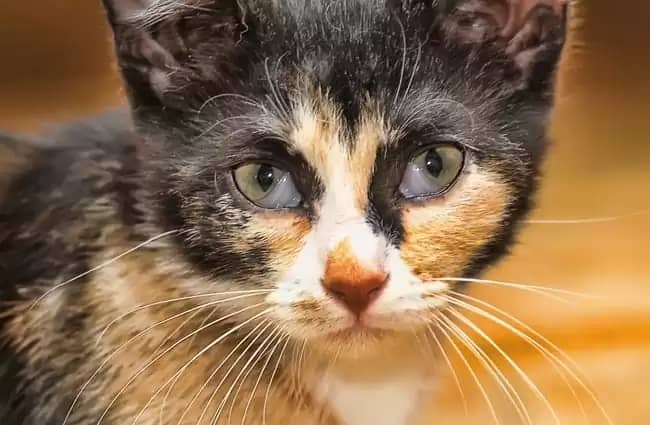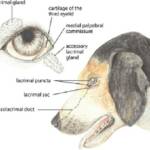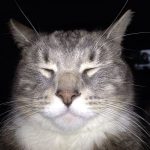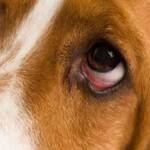Haws syndrome is an elevation of the third eyelid in both eyes. It can happen when the cat is sick with something not related to the eye itself.
The third eyelid, or nictitating membrane, is a transparent eyelid found in cats, dogs and some other mammals. Its purpose is to moisten the eye as well as provide a protective covering.

Haw is what the third eyelid in horses are called, although in cats it’s a nictitating membrane. Haws syndrome is not associated with diseases inside or outside of the eye or the socket.
It goes by other names as well including bilateral third eyelid protrusion, bilateral prolapse of the third eyelid, and bilateral prolapse of the nictitating membrane.
This condition has not been reported in dogs, although dogs can have the third eyelid protrude in one eye for other reasons.
The exact cause is not known. And while many diseases can lead to this in cats, the condition is frequently associated with gastrointestinal (GI) inflammatory disorders. The elevation of the third eyelid may be due to a change in the way nerves are supplied to the third eyelid.
A cat’s vision is normal with this condition, but may be functionally decreased simply because the elevated third eyelids are blocking the cat’s vision. Affected cats may have watery diarrhea that began before the onset of elevation.
Diagnosis
Diagnosis is primarily made on finding classic clinical signs and eliminating other diseases with a thorough ophthalmic and physical examination. The main sign is a protrusion of both third eyelids. Thankfully, the eyes are not painful.
Your veterinarian may do a phenylephrine challenge. Phenylephrine eye drops are applied to the eyeballs to see if the third eyelids return to their normal position within 20 minutes; If they do, then Haws can be confirmed.
Treatment
This condition usually resolves when the underlying cause is treated.
Monitoring and Prognosis
The prognosis is good as long as the underlying cause has been found and treated. In one report about cats, the average time for the third eyelids to return to normal was 47 days; however, the number of cases evaluated was limited.
In a separate report, 17 out of 45 cats had a third eyelid protrusion that persisted for more than 4 weeks. If the condition persists, your veterinarian may suggest further diagnostic tests, especially if your cat has GI signs.
See also: Cherry Eye in Dogs and Cats [that red lump in the eye]
See also: Dry eye is formally known as keratoconjunctivitis sicca or KCS


